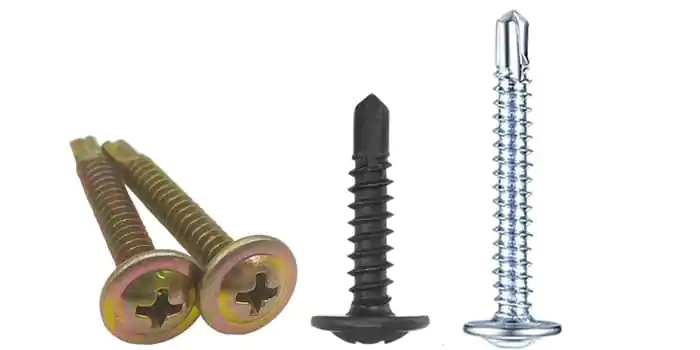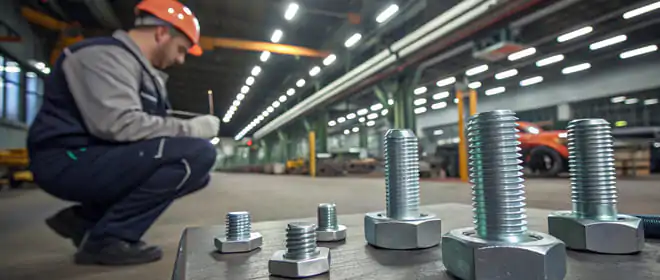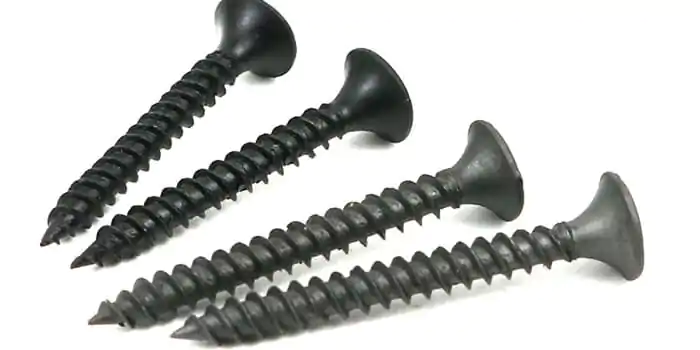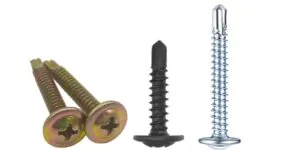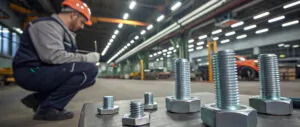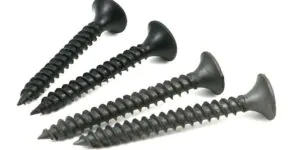Threaded rods are deceptively simple components, yet they are essential to structural engineering and industrial applications. Today, I’ll guide you through the production process of B7 and B16 threaded rods—from material selection to quality control, each step is designed to ensure stability and reliability.
The manufacturing process for B7 and B16 threaded rods involves several key steps: material selection, cutting, threading, heat treatment, surface treatment, chamfering, quality control, and finally, packaging and transportation. While both types undergo similar manufacturing steps, differences in material composition and performance requirements make each suited to distinct environmental and temperature conditions.
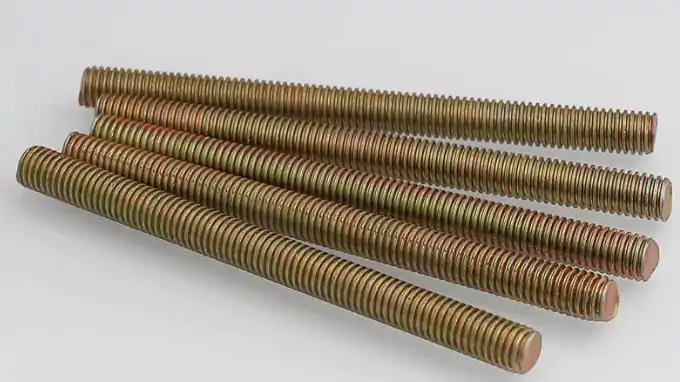
Now, let’s explore each stage of manufacturing in more detail.
1. Material Selection
Selecting the right material is the first step in manufacturing threaded rods. This choice determines not only the rod’s strength but also its performance in various environments.
B7 Threaded Rods
B7 threaded rods are made from AISI 4140 alloy steel, renowned for its excellent strength and heat resistance. This material is ideal for high-temperature applications, such as in the oil and gas industry, where it maintains structural integrity under intense heat and pressure.
B16 Threaded Rods
While similar to B7, B16 threaded rods include added vanadium to enhance performance at even higher temperatures. In petrochemical installations, for instance, they can withstand extreme temperature fluctuations, ensuring stability.
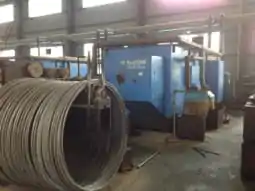
2. Cutting
After choosing the right material, the next step is to cut long steel bars (usually 12 feet) to the needed length. We use band saws and other cutting tools to make sure each piece is the exact size we need. This accuracy helps reduce material waste and makes the production process more efficient, setting a strong base for the steps that follow.
3. Threading
Threading is a pivotal part of manufacturing threaded rods, typically performed by thread rolling or thread cutting.
Thread Rolling
For high-strength applications, we use thread rolling, where rods are passed through cylindrical dies that roll threads onto them by displacing material rather than cutting it away. This enhances thread strength, making it ideal for high-load applications.
Thread Cutting
Thread cutting, though less common, is used for specific requirements. Specialized tools cut threads directly into the rod, a slower method better suited to small-batch production.
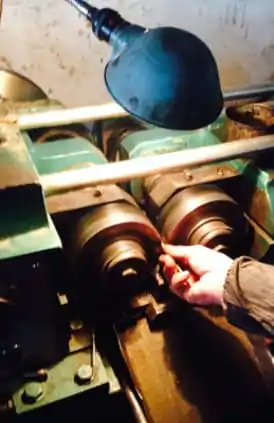
4. Heat Treatment
To improve the strength of B7 and B16 threaded rods, heat treatment is very important. This process includes two main steps: quenching and tempering.
Quenching and Tempering
In the quenching process, rods are heated to high temperatures (about 1500°F) and then quickly cooled. This makes them harder. Next, the rods go through tempering, where they are reheated to a lower temperature to make them more flexible.
Usually, B7 threaded rods are treated to reach a minimum tensile strength of about 125,000 psi. B16 rods are even stronger because they contain vanadium, which helps them perform better in extremely high temperatures. This makes B16 rods more reliable in tough, high-heat conditions.
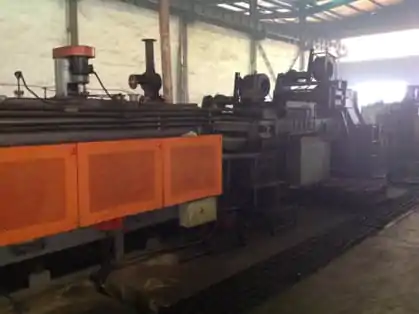
5. Surface Treatment
After heat treatment, surface treatments are applied to enhance corrosion resistance. Different surface treatments are chosen based on specific application needs.
Galvanization
B7 threaded rods are often galvanized, which means a layer of zinc is added to protect them from rust. This process helps the rods last longer, especially in damp or wet environments.
Passivation
For B16 threaded rods, passivation is common. This process removes free iron from the surface, enhancing corrosion resistance, especially suited for high-temperature, corrosive environments.
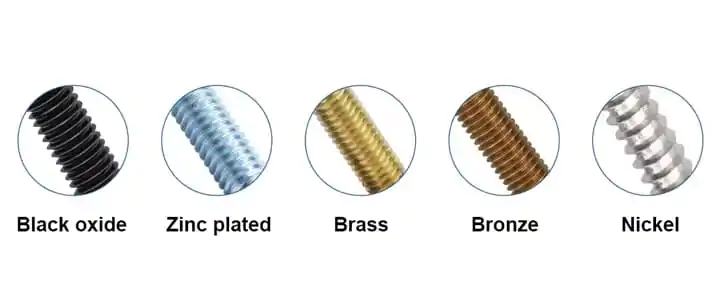
6. Chamfering
Chamfering the ends of threaded rods helps reduce wear during installation and protects the threads from damage. This process involves creating a small angled edge on the ends, making assembly smoother and more efficient.
This simple adjustment helps prevent problems like cracking or misalignment during installation, which ultimately makes the rod last longer.
7. Quality Control
Strict quality control checks are used throughout the manufacturing process to meet required standards. From size accuracy to strength and surface treatment quality, each part is carefully inspected.
We perform physical and chemical tests, like size checks, strength testing, and surface inspections, to make sure our products meet or exceed international standards. This gives our customers peace of mind.
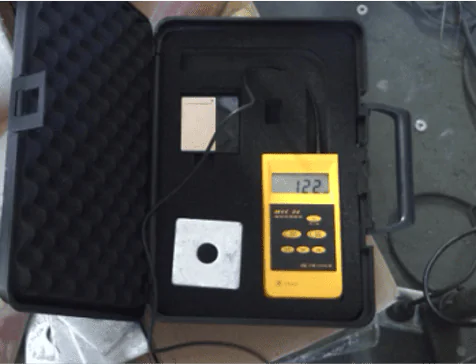
8. Packaging and Transportation
After all manufacturing steps are finished, the rods are carefully packaged to avoid damage during transport. Threaded rods are usually bundled together or placed in protective containers to ensure they reach customers safely.
Protecting our products during transport not only reduces damage but also shows our commitment to quality. No matter the distance, our goal is for customers to receive products as pristine as when they left our facility.
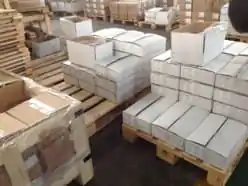
Conclusion
While the production processes for B7 and B16 threaded rods are similar, their differences in material composition and performance set them apart. B7 is suitable for high-temperature and high-pressure environments, whereas B16 excels in even more extreme conditions.
I hope today’s overview helps you understand how these critical components are made. Choosing the right threaded rod improves equipment reliability and reduces maintenance costs. If you have any questions about selecting the best rod for your needs, feel free to contact us or visit our website . We’re here to provide expert consultation and top-quality products.


